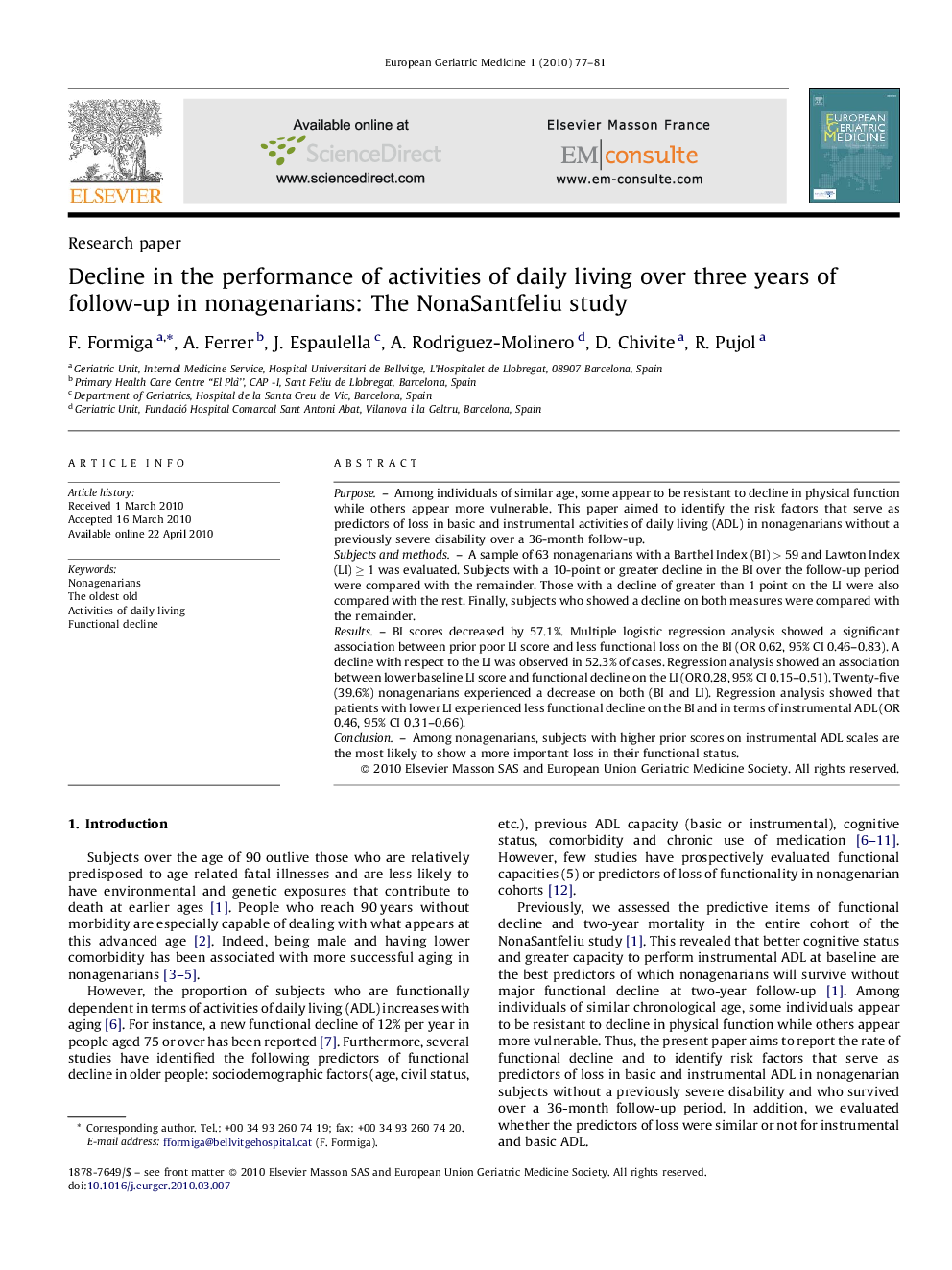| کد مقاله | کد نشریه | سال انتشار | مقاله انگلیسی | نسخه تمام متن |
|---|---|---|---|---|
| 3324833 | 1211981 | 2010 | 5 صفحه PDF | دانلود رایگان |

PurposeAmong individuals of similar age, some appear to be resistant to decline in physical function while others appear more vulnerable. This paper aimed to identify the risk factors that serve as predictors of loss in basic and instrumental activities of daily living (ADL) in nonagenarians without a previously severe disability over a 36-month follow-up.Subjects and methodsA sample of 63 nonagenarians with a Barthel Index (BI) > 59 and Lawton Index (LI) ≥ 1 was evaluated. Subjects with a 10-point or greater decline in the BI over the follow-up period were compared with the remainder. Those with a decline of greater than 1 point on the LI were also compared with the rest. Finally, subjects who showed a decline on both measures were compared with the remainder.ResultsBI scores decreased by 57.1%. Multiple logistic regression analysis showed a significant association between prior poor LI score and less functional loss on the BI (OR 0.62, 95% CI 0.46–0.83). A decline with respect to the LI was observed in 52.3% of cases. Regression analysis showed an association between lower baseline LI score and functional decline on the LI (OR 0.28, 95% CI 0.15–0.51). Twenty-five (39.6%) nonagenarians experienced a decrease on both (BI and LI). Regression analysis showed that patients with lower LI experienced less functional decline on the BI and in terms of instrumental ADL (OR 0.46, 95% CI 0.31–0.66).ConclusionAmong nonagenarians, subjects with higher prior scores on instrumental ADL scales are the most likely to show a more important loss in their functional status.
Journal: European Geriatric Medicine - Volume 1, Issue 2, May 2010, Pages 77–81